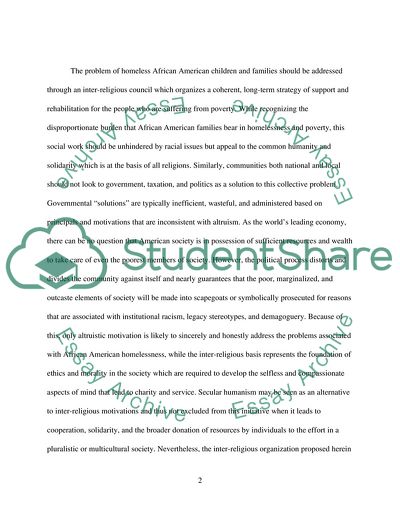Cite this document
(Intervention Strategy for Homeless African American Children Research Paper Example | Topics and Well Written Essays - 3000 words, n.d.)
Intervention Strategy for Homeless African American Children Research Paper Example | Topics and Well Written Essays - 3000 words. https://studentshare.org/sociology/1761585-intervention-strategy-for-homeless-african-american-childrenfamilies
Intervention Strategy for Homeless African American Children Research Paper Example | Topics and Well Written Essays - 3000 words. https://studentshare.org/sociology/1761585-intervention-strategy-for-homeless-african-american-childrenfamilies
(Intervention Strategy for Homeless African American Children Research Paper Example | Topics and Well Written Essays - 3000 Words)
Intervention Strategy for Homeless African American Children Research Paper Example | Topics and Well Written Essays - 3000 Words. https://studentshare.org/sociology/1761585-intervention-strategy-for-homeless-african-american-childrenfamilies.
Intervention Strategy for Homeless African American Children Research Paper Example | Topics and Well Written Essays - 3000 Words. https://studentshare.org/sociology/1761585-intervention-strategy-for-homeless-african-american-childrenfamilies.
“Intervention Strategy for Homeless African American Children Research Paper Example | Topics and Well Written Essays - 3000 Words”. https://studentshare.org/sociology/1761585-intervention-strategy-for-homeless-african-american-childrenfamilies.


